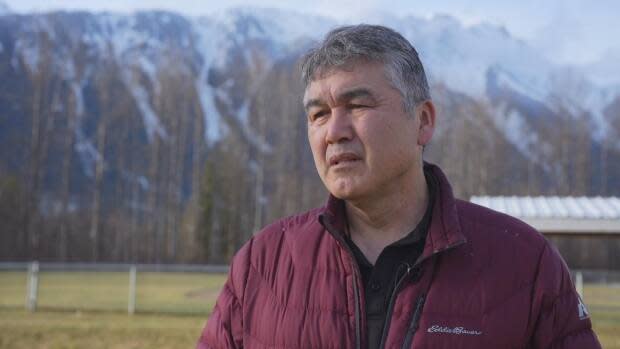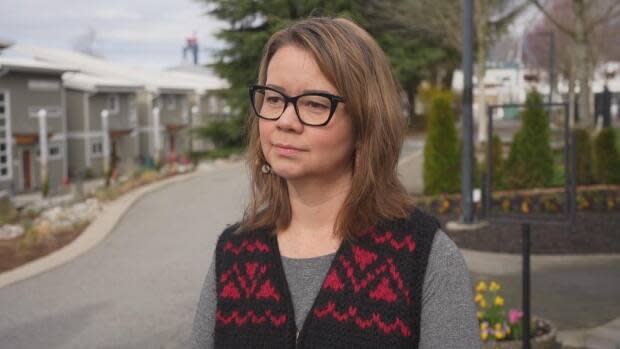Why reconciliation in small towns might progress more slowly than at provincial, federal level

Ask the mayor of a small town and the chief of the local First Nation how reconciliation on a local governance level is going, and you might get two different answers.
"It's evolved and changed in a big way, and I think it's a lot more collaborative than it used to be. There's a long way to go," said Pemberton Mayor Mike Richman, citing a number of joint committees that didn't exist five years ago.
"We work very closely together. I feel that there is an ease in terms of picking up the phone between myself and Chief Nelson … and an ability to and a desire to work really closely together."
He's referring to Chief Dean Nelson, the political chief of the Líl̓wat Nation. Their unceded lands span from Whistler to Birken and the Stein Valley Nlaka'pamux Heritage Park, with most living in and around Mount Currie close to Pemberton — a town named for a Hudson's Bay Company surveyor.
Nelson doesn't see the dynamic in the same way as Richman.
"We're on talking terms. I mean, we speak different languages on things. The understanding is still not there," said Nelson.
While Pemberton has grown at a faster rate since 2016 than any municipality in B.C. that has at least 1,000 people, the Líl̓wat Nation has no say over the pace of developments — and little ability to create direct benefits on its 10 reserves, which comprise just 0.004 per cent of traditional Líl̓wat territory.
"We don't have the freedom to do what we need to help our people," said Nelson.
"We want an equal part in it, an equal opportunity for the lands anywhere within our territory. And we're not."

'Parked at the edge'
The relationship between small towns in B.C. and local First Nations can vary: some communities have detailed strategies and joint committees, others don't. The distance between municipalities and the nearest Indigenous communities can be a factor, along with the limited budgets of small towns.
But the one common denominator is history.
"British Columbia was settled very late, and as a result of that, the difference in power between the settlers and Indigenous people is particularly great," said Cole Harris, a UBC professor emeritus whose research has focused on colonial strategies and Indigenous displacement in B.C.
Small towns are often on land where Indigenous settlements once thrived before being displaced by governments — often to reserves in nearby areas that were usually smaller and less agriculturally desirable than the municipal settlement.
"There's very little agricultural land in British Columbia and more settlers are coming in. They're taking it very quickly," said Harris, recounting how the transition happened in many areas of the province in the late 19th century.
"Often in B.C the relations between bands and towns have been very bad. [They've] been sort of parked at the edge of the municipality, and they've not been wanted in the towns."
Nelson said he heard plenty of stories growing up of Líl̓wat members being banned from entering Pemberton, and while the relationship with the municipality is much improved, there's still structural issues when it comes to working with local governments on shared issues.
"There were so many restrictions that kept us from being part of everyday life … and there's still a lot under the Indian Act today that keep us from being more successful in everyday things," he said.

Symbols and meetings
Ginger Gosnell-Myers, a fellow at Simon Fraser University who works on urban Indigenous planning, policy and decolonization, said the Indian Act has also hindered the development of strong bonds between municipalities and local First Nations.
"First Nations have normally been at arm's length from their municipal neighbours. This is by design .. [they're] focused on the federal government because of the Indian Act," she said.
"There's been little incentive for either government to reach out to one another and talk about what an outcome from a successful relationship could look like."
Gosnell-Myers said municipalities should better appreciate opportunities in working with Indigenous communities that often lie right outside municipal boundaries, including partnering on economic roundtables or combining efforts on tourism strategies.
"A lot of First Nations communities bank in a small town. They get their groceries and their gas in a small town. They eat at the restaurants in the small town and First Nations are really responsible for keeping these small towns alive. And that hasn't normally been recognized as a positive attribute."
Aside from more meetings, greater symbolic changes in at least two small towns could be underway. Both Powell River and Queen Charlotte Village are undergoing consultation on whether to change their names, following requests by the local First Nation.
Meanwhile at Mount Currie, Chief Nelson is just looking for signage that tells people who travel past Whistler along Highway 99 exactly where they are.
"Anybody coming into Pemberton doesn't know," he said.
"There's no identity to the territory as you come in. So we have to work on that."

